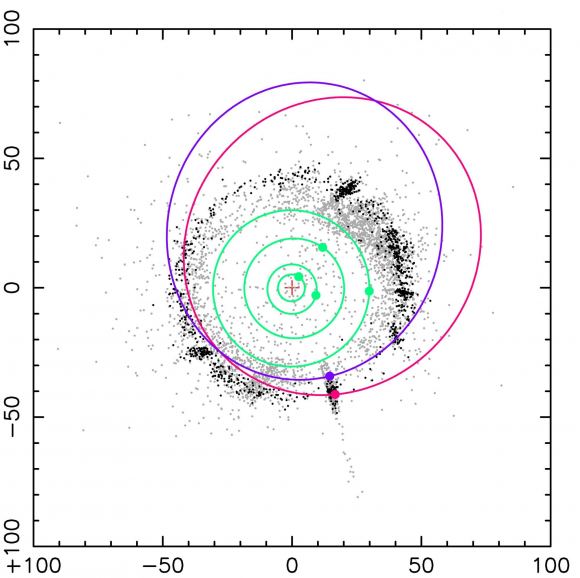As New Horizons continues its epic journey to explore the Kuiper Belt, it has a study partner here on Earth. The Subaru Telescope on Hawaii’s Big Island deploys its Hyper Suprime-Cam imager to look at the Kuiper Belt along the spacecraft’s trajectory. His observations show that the Kuiper belt extends further than scientists thought.
The observations support the search for Kuiper Belt Objects (KBOs) for New Horizons to explore further. Subaru has found many smaller bodies there so far. However, none of them are along the trajectory of the spacecraft. A big surprise to the science teams at Subaru is that at least two of these objects orbit beyond 50 AU, the current assumed “limit” of the Belt.
If observers continue to find more such objects outside the “50 AU limit,” it means the Kuiper Belt is bigger than everyone thought. Or it could exist in two parts – a sort of inner and outer Kuiper belt. Scientists already know that the belt is much dustier than expected, thanks to observations made with the dust counter aboard New Horizons.
Implications of an extended or bipartite Kuiper belt
According to Fumi Yoshida, who led the research for the Subaru observation team, the Subaru observations have profound implications for our understanding of the solar nebula beyond simply extending the boundary of the Kuiper belt. “Looking outside the Solar System, a typical planetary disk extends about 100 AU from the host star (100 times the distance between the Earth and the Sun), and the Kuiper Belt, estimated to be 50 AU in length, is very compact. . Based on this comparison, we believe that the primordial solar nebula from which the Solar System was born may have extended further than the current Kuiper Belt,” Yoshida said.
Let’s say the original disk was quite large. Then it is possible that undiscovered planetary bodies cut off the outer edge of the Kuiper belt. If this happened, then it makes sense to search the outer limits of the current Belt to find such a severed object. It is also possible that perhaps this truncation created a second Kuiper belt beyond the currently known belt. What it’s like is anyone’s guess, though it’s probably dusty and very likely has at least a few larger objects. So even if there’s nothing along New Horizons’ trajectory, using Subaru to study the distribution of objects it found will help scientists understand the evolution of the Solar System.
Search for KBO
The Subaru Telescope has been looking for more KBOs to explore since New Horizons flew by Arrokoth in 2019. The goal is to find more KBOs along the flyby. The search targeted two Hyper Suprime-Cam arrays along the spacecraft’s trajectory through the Belt. The New Horizons team spent about 30 midnights to find more than 240 outer solar system objects.
The next step was for the Japanese team to analyze the images from these sightings. However, they used a different method than the mission team and found seven new outer Solar System objects. The scientists then analyzed the HSC data using a moving object detection system developed by JAXA. It normally detects near-Earth asteroids and other space debris. These types of bodies move very quickly compared to more distant ones. So finding very dim, distant, slow moving objects was a challenge. That’s because the team had to adjust to the speed of Kuiper belt objects. They then used some updated image analysis to confirm their findings. Scientists now know the orbits of two of the seven new objects, and the Minor Planet Center (MPC) has assigned them provisional designations.

We continue our search for the Kuiper Belt
The discovery of more KBOs in the outer Solar System (along with New Horizons’ ongoing dust detection activities) tells scientists that there is more to the Kuiper Belt than anyone expected. The evidence will be Subaru’s continued observations to detect and confirm more objects “out there”.
“The mission team’s search for Kuiper Belt objects using Hyper Suprime-Cam continues today, and a number of papers will be published in the future, mainly by the North American group,” Yoshida said. “This research, the discovery of sources with the potential to expand the Kuiper Belt region using a method developed in Japan and led by Japanese scientists, serves as a precursor to these publications.”
For more information
A new horizon for the Kuiper belt: Subaru telescope wide-field observations
Deep analysis of New Horizons’ KBO search images
PI Perspective: Needles in the Cosmic Haystack